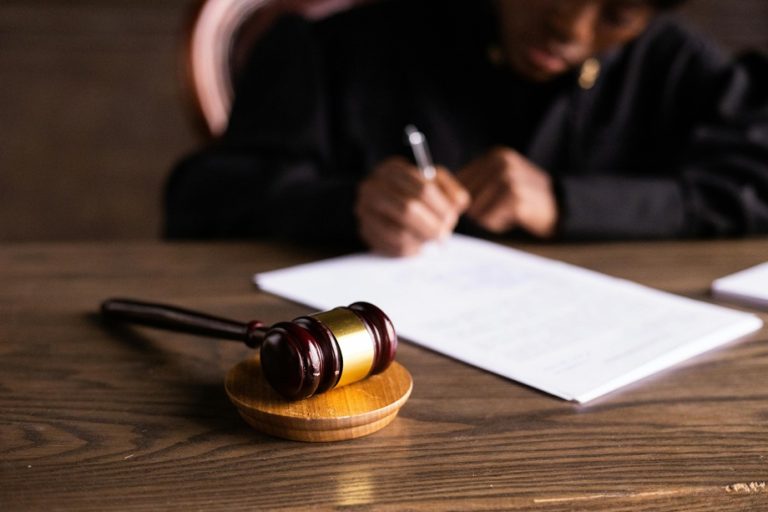Proving liability and loss isn’t always as simple as it first appears. Many people file lawsuits assuming that the facts speak for themselves but soon face unexpected challenges. 
What exactly does it take to prove someone was legally at fault for harm? How do courts decide whether a person’s losses are valid and measurable? What kind of evidence holds up in a courtroom setting?
Litigants often overlook the legal structure needed to move a case forward. Even small missteps early on can affect how compensation is determined later. Without preparation, a claim that feels obvious might fail to convince a judge. This article will break down the key steps every litigant should understand.
Legal Responsibility in the Context of Personal Injury
Liability in personal injury cases requires proving that a party is legally responsible for the harm. The plaintiff must first demonstrate that the defendant had a clear legal duty of care. That responsibility must have been violated, resulting in a breach of duty.
For example, NIH notes that in a malpractice case, the plaintiff must show that the accused medical professional breached their duty of care. This means proving the professional acted outside accepted standards, either through an action or an omission. Experts then review medical practice laws and organizational policies to assess whether the accused breached their duty of care through their conduct.
The plaintiff must also establish causation by showing a direct link between the breach and the harm suffered. Courts evaluate whether the defendant acted as a reasonable person would in similar circumstances. The standard of proof in legal proceedings is typically a preponderance of the evidence.
This means the plaintiff must demonstrate that the claim is more likely true than not. Judges rely on timelines, records, and patterns of behavior to evaluate liability. A strong case connects duty, breach, and harm with clarity and supporting evidence.
Does intent impact breach assessment?
Intent isn’t required to establish a breach, but it can influence a judge’s interpretation. Repeated disregard for safety rules may suggest reckless behavior, which affects the outcome. Careless actions with foreseeable consequences can meet the threshold for legal responsibility.
Loss Valuation Principles Used in Personal Injury Claims
Courts only award damages when there is proof of actual, measurable loss. Plaintiffs must present receipts, bills, or documents that justify their financial claims. Emotional suffering must also be supported with context or expert evaluation when requested.
Judges often separate losses into economic and non-economic categories for calculation clarity. Medical bills, lost income, or property repair costs are commonly accepted economic damages. Subjective claims like pain and suffering are non-economic damages and need reasonable and documented support.
Bloomberg Law states that courts often use two common methods to calculate non-economic damages in injury cases. The multiplier method calculates damages by multiplying economic losses by a factor, usually between 1.5 and 5. This number reflects factors like injury severity and how pain affects daily life. The per diem method assigns a daily value, often tied to wages, for each painful day.
Claims involving future damages usually require input from credible expert witnesses. Courts avoid speculative numbers and need a well-structured damages explanation with supporting records. The stronger the evidence, the more likely the damages will be awarded.
How do courts treat partial recovery situations?
Even partial recovery may qualify for full or partial damages depending on the context. Courts assess what recovery was possible and expected, and how it compares to the final result. If setbacks could’ve been avoided, compensation may reflect only part of the total claim.
Shared Fault and How It Affects Case Outcomes
In some cases, the plaintiff may share the blame for what occurred. States with comparative negligence reduce compensation based on shared responsibility percentages.
Investopedia highlights that there are three types of comparative negligence used in U.S. courts. These include pure comparative negligence, modified comparative negligence, and the slight/gross negligence rule. Each model determines how damages are awarded based on a party’s percentage of fault.
Pure comparative negligence permits recovery even if you are 99% responsible for the incident. Modified comparative negligence blocks recovery if your fault reaches 50% or 51%, depending on the state. South Dakota uses a slight/gross negligence rule for fault assessment. This rule requires stricter evaluation based on the severity of each party’s actions.
Understanding this principle helps litigants prepare for possible arguments from defendants. Defendants often highlight the plaintiff’s actions to reduce their liability. Even small mistakes can impact how much compensation you receive in court. Documenting safe behavior and intent may help limit the fault assigned to you. The comparative fault often affects settlement negotiations and jury award calculations.
What happens when several parties are found to be at fault?
Courts divide blame across all responsible parties using percentages based on each role. Each party may owe damages proportionate to their fault share, depending on state laws. This distribution can make lawsuits more complex and involve additional negotiation or litigation rounds.
Evidence Requirements for High-Stakes Legal Disputes
High-stakes lawsuits often hinge on technical evidence that demands careful legal interpretation. Disputes involving medicine, finance, or engineering need documentation beyond basic statements or forms. Courts rely on expert-reviewed records to understand what happened and why it matters.
For example, in cases involving medical injuries, every detail must align with accepted treatment standards. Medical malpractice lawyers often step in to manage complex evidence and legal framing.
According to Lesser, Landy, Smith & Siegel, PLLC, expert attorneys know how to work with medical experts to clarify key issues. These lawyers ensure the timeline, diagnosis, and treatment sequence are fully supported by records. Without their input, crucial gaps in proof may weaken an otherwise valid claim.
The right evidence, presented correctly, can determine success in difficult cases like this.
Can missing documentation harm a strong claim?
Yes, missing key records can weaken even well-supported legal arguments in complex cases. Courts want a complete timeline with consistent, unaltered evidence across all stages of review. Gaps in documentation may raise questions about the truthfulness and accuracy of data.
Legal Definitions and Their Influence on Case Arguments
Precise definitions in law determine whether your case fits specific legal categories.
The Maryland People’s Law Library mentions that it’s also worth noting that in most cases, the judge serves as your primary audience. Judges play a major role in setting expectations, asking questions, and guiding case flow. Clear communication with the judge is critical, as they decide how proceedings unfold.
Terms like negligence, breach, and damages have strict meanings under court rules. Misunderstanding definitions can lead to weak arguments or irrelevant evidence being submitted. Courts expect litigants to frame claims using legally recognized language and context.
Using vague or casual wording may confuse judges or undermine your case’s foundation. Legal definitions are often interpreted through prior rulings and statutory guidance. Reviewing case law helps clarify how courts treat similar issues and wording. Mastering legal terminology is key to proving liability and qualifying for loss recovery.
How are new legal terms introduced into practice?
New legal terms often enter through landmark rulings, statutory amendments, or regulatory changes. Once recognized by appellate courts, these terms gain credibility and become part of future arguments. Litigants must stay updated to understand and use new terminology effectively.
Winning a court case takes more than assumptions or vague ideas about legal responsibility. You need clear proof that a duty of care was breached and that it caused real harm. Solid evidence matters, especially when showing an economic loss or future impact through expert insights.
Courts also expect you to understand comparative negligence and how it may reduce your claim. Every detail counts, including how you document loss and present damages with clarity. Using accurate legal language helps avoid confusion and strengthens your case. Successful litigation often comes down to good preparation, clear communication, and meeting the court’s exact standards.



